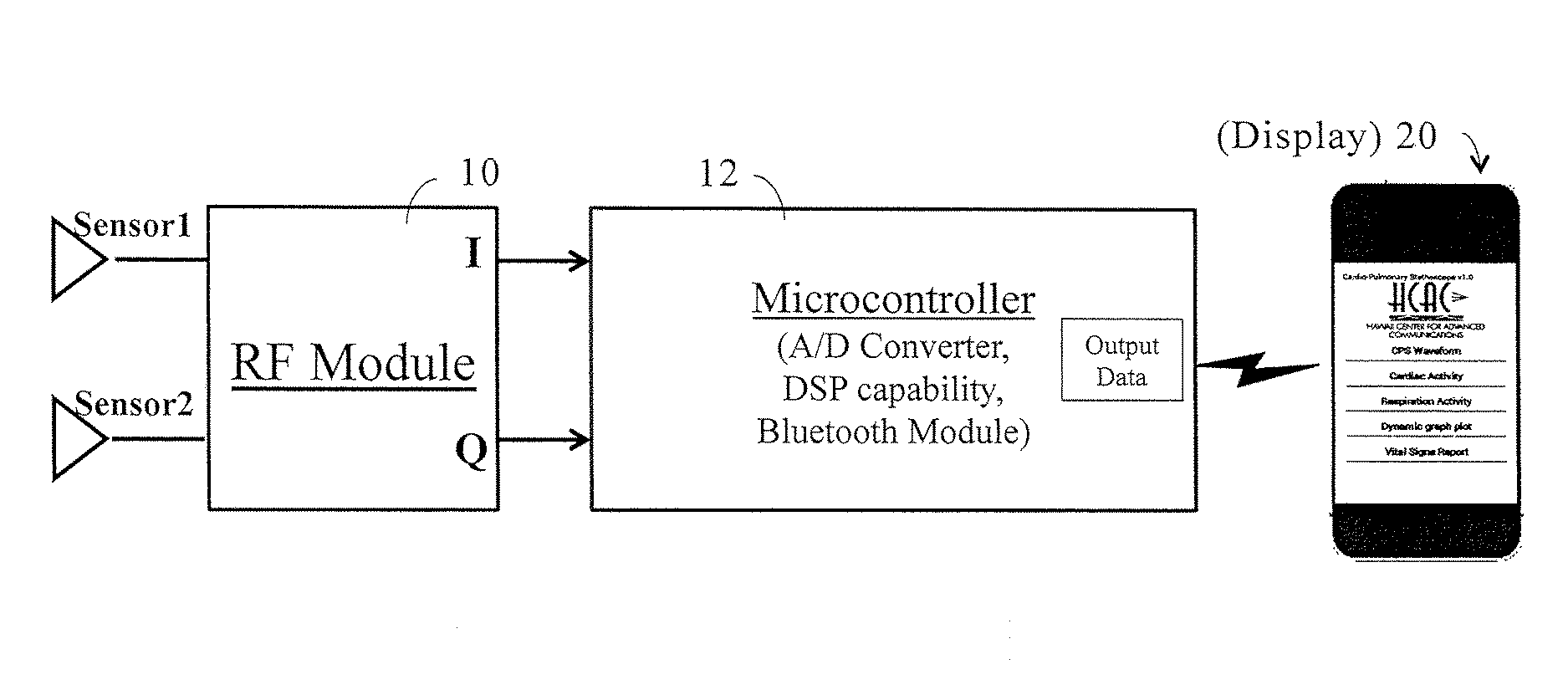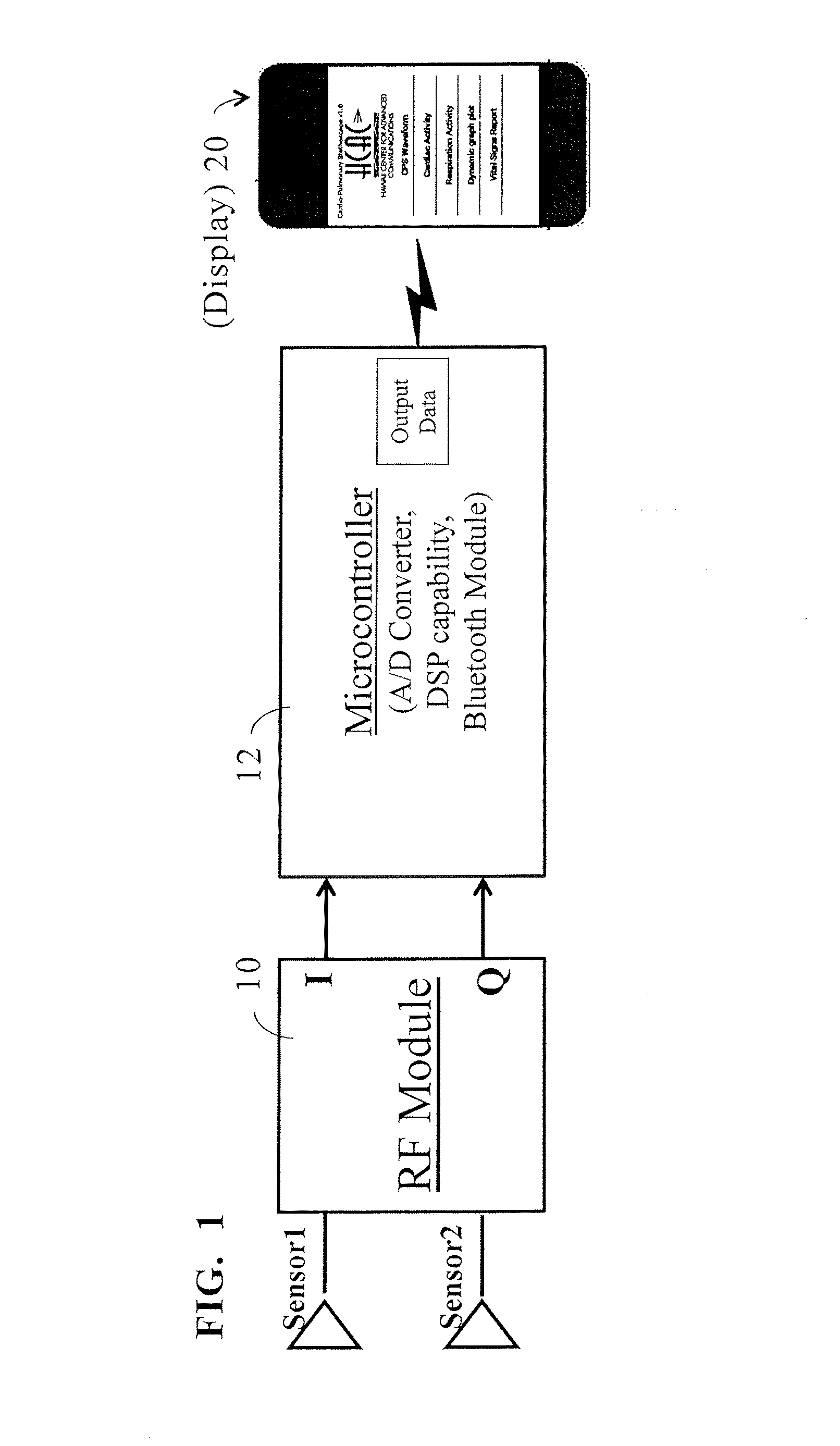Microwave stethoscope for measuring cardio-pulmonary vital signs and lung water content
a stethoscope and cardio-pulmonary technology, applied in the field of microwave stethoscopes, can solve the problems of no reliable, non-invasive, low-cost, and easy-to-use medical sensors developed, and achieve the effects of improving patient comfort, improving patient comfort, and improving patient comfor
- Summary
- Abstract
- Description
- Claims
- Application Information
AI Technical Summary
Benefits of technology
Problems solved by technology
Method used
Image
Examples
Embodiment Construction
[0031]Certain preferred embodiments and implementation examples of the present invention are described in detail below. However, it is to be understood that the are illustrative only, and that the principles of the invention disclosed herein are applicable to other related or equivalent modifications, variations, and fields of application.
[0032]Referring to FIG. 1, a schematic diagram illustrates a cardio-pulmonary (CP) microwave stethoscope measurement method and device configuration employing a paired sensor array comprised of a microwave transmission Sensor-1 and a microwave reception Sensor-2 placed on a patient's chest in spaced-apart side-by-side configuration for taking integrated vital signs (VS) and lung water content (LWC) and other critical measurements. A radio-frequency (RF) module 10 is used to send a microwave signal to the transmission Sensor-1 which transmits the signal through the skin and tissues of the thorax in position at a patient heart-lung location, and rece...
PUM
 Login to View More
Login to View More Abstract
Description
Claims
Application Information
 Login to View More
Login to View More - R&D
- Intellectual Property
- Life Sciences
- Materials
- Tech Scout
- Unparalleled Data Quality
- Higher Quality Content
- 60% Fewer Hallucinations
Browse by: Latest US Patents, China's latest patents, Technical Efficacy Thesaurus, Application Domain, Technology Topic, Popular Technical Reports.
© 2025 PatSnap. All rights reserved.Legal|Privacy policy|Modern Slavery Act Transparency Statement|Sitemap|About US| Contact US: help@patsnap.com



